Autonomic Nervous System And Heart
Autonomic nervous system and heart. Sympathetic parasympathetic and enteric. These branches differ in their neurotransmitters and. The study aims to examine whether treatment-related changes in autonomic balance as indexed by heart rate variability HRV were associated with changes in sexual arousal and orgasm function.
A rush to develop clinical interventions and implant a range of devices aimed at. Heart failure as an autonomic nervous system dysfunction. The primary relationship between the nervous stem and the heart lies with the autonomic nervous system.
A persons nervous system is divided into two subsystems. A Autonomic ganglia b Skeletal muscle neuromuscular junctions c Autonomic effector cells d Sensory carotid sinus baroreceptor zone 3 Location of M2 cholinoreceptor. These branches differ in their neurotransmitters and exert stimulatory or inhibitory effects on target tissue via adrenergic and muscarinic receptors.
Cannon believed the autonomic nervous system and all of. In addition it controls the peripheral resistance of blood vessels. The regulation is fast and involuntary.
The autonomic nervous system ANS is the part of the nervous system that controls the visceral functions of the body which are totally or largely independent of voluntary control of the individual. The autonomic nervous system regulates heart rate and breathing. In this group spectral analysis of the RR interval showed a reduction of low-frequency fluctuations in heart rate 2223 that is fluctuations that are known to be a component of heart rate variability that reflects vagal modulation of the sinus node.
The pathophysiology of heart failure HF is characterized by hemodynamic abnormalities that result in neurohormonal activation and autonomic imbalance with increase in sympathetic activity and withdrawal of vagal activity. THE AUTONOMIC NERVOUS SYSTEM AND THE HEART. It induces the force of contraction of the heart and its heart rate.
In physiologist and researcher Walter Bradford Cannons view when we are aroused the mobilizing part of the nervous system sympathetic energizes us for fight or flight which is indicated by an increase in heart rate and in more quiescent moments the calming part of the nervous system parasympathetic calms us down and slows the heart rate. In recent decades numerous anatomical and physiological studies of the cardiac autonomic nervous system ANS have investigated the complex relationships between the brain and the heart.
Impact of music on pediatric oncology outpatients.
ANS dysfunction may result from primary disorders of the autonomic nerves or secondarily in response to cardiac or other systemic disease. Alterations in receptor activation from this autonomic imbalance may have pr. The autonomic nervous system ANS is the part of the nervous system that controls the visceral functions of the body which are totally or largely independent of voluntary control of the individual. Heart failure as an autonomic nervous system dysfunction. Women with histories of childhood sexual abuse CSA have higher rates of sexual difficulties as well as high sympathetic nervous system response to sexual stimuli. The cardiac autonomic nervous system consists of 2 branches the sympathetic and the parasympathetic systems that work in a delicately tuned yet opposing fashion in the heart. The autonomic nervous system continually tells the heart to pump blood through chemical and electrical signaling from the brain. The autonomic nervous system and heart failure. A rush to develop clinical interventions and implant a range of devices aimed at.
Alterations in receptor activation from this autonomic imbalance may have pr. 101007s00429-005-0462-1 Google Scholar Kemper K. Specifically the ANS can regulate heart rate blood pressure rate of respiration body temperature sweating gastrointestinal motility and secretion as well as other visceral activities that maintain. Autonomic activation not only alters heart rate conduction and hemodynamics but also cellular and subcellular properties of individual myocytes. 53 The high-frequency components of heart rate variability are associated with vagus nerveparasympathetic effect whereas the low-frequency components are due to sympathetic and parasympathetic activation. The autonomic nervous system ANS is the part of the nervous system that controls the visceral functions of the body which are totally or largely independent of voluntary control of the individual. The cardiac autonomic nervous system consists of 2 branches the sympathetic and the parasympathetic systems that work in a delicately tuned yet opposing fashion in the heart.




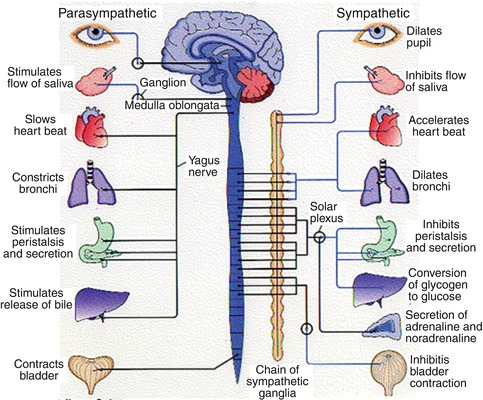







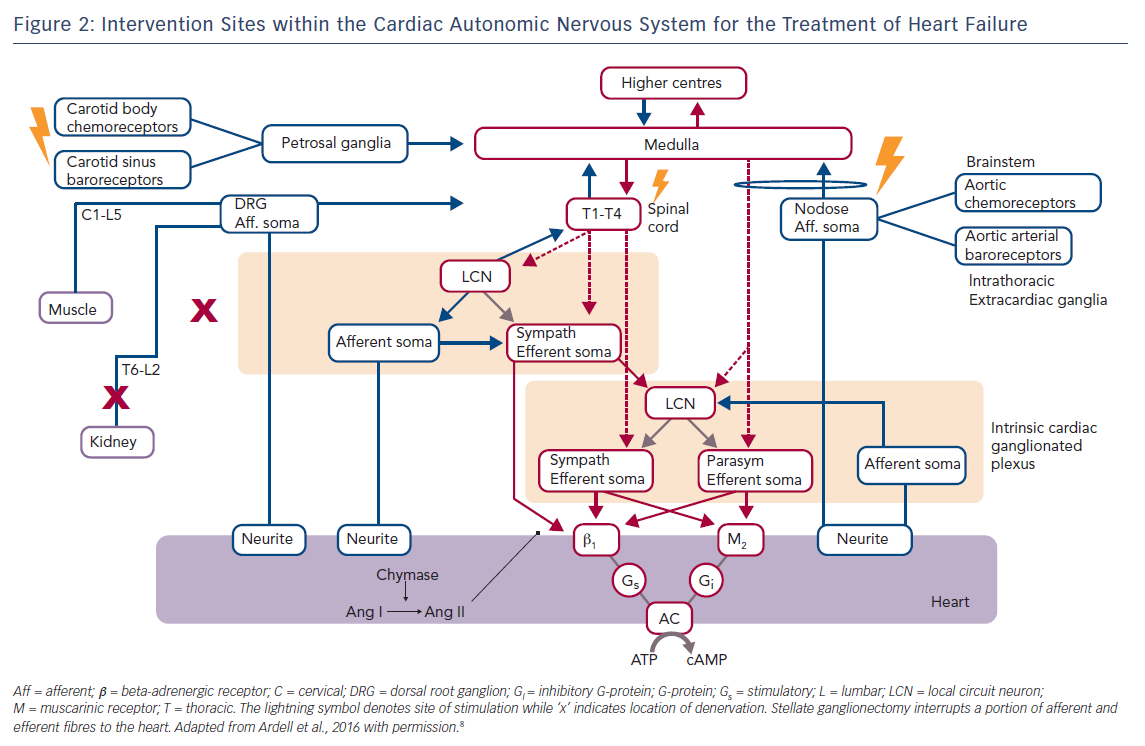
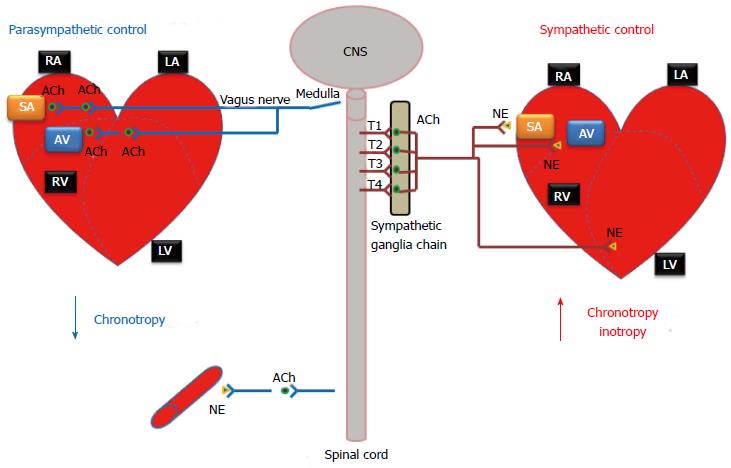

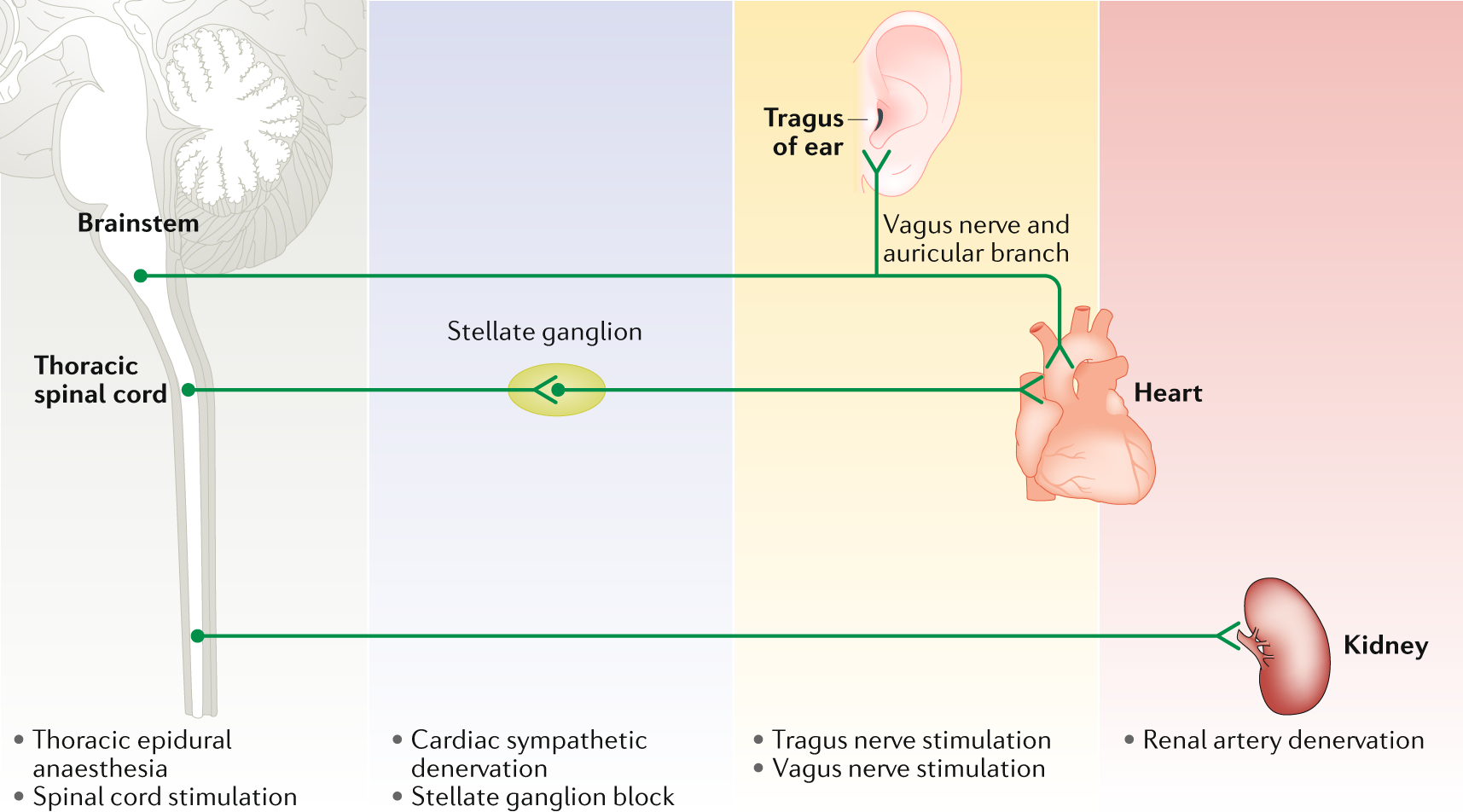




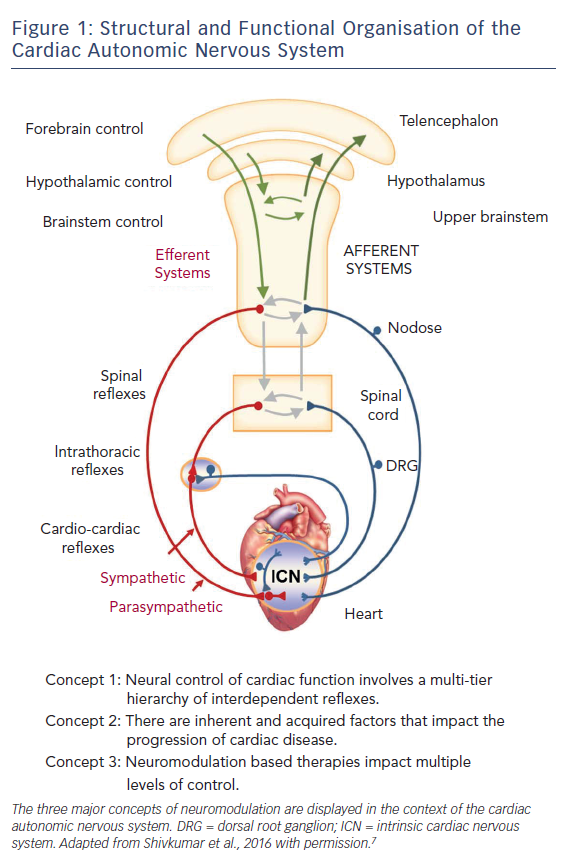



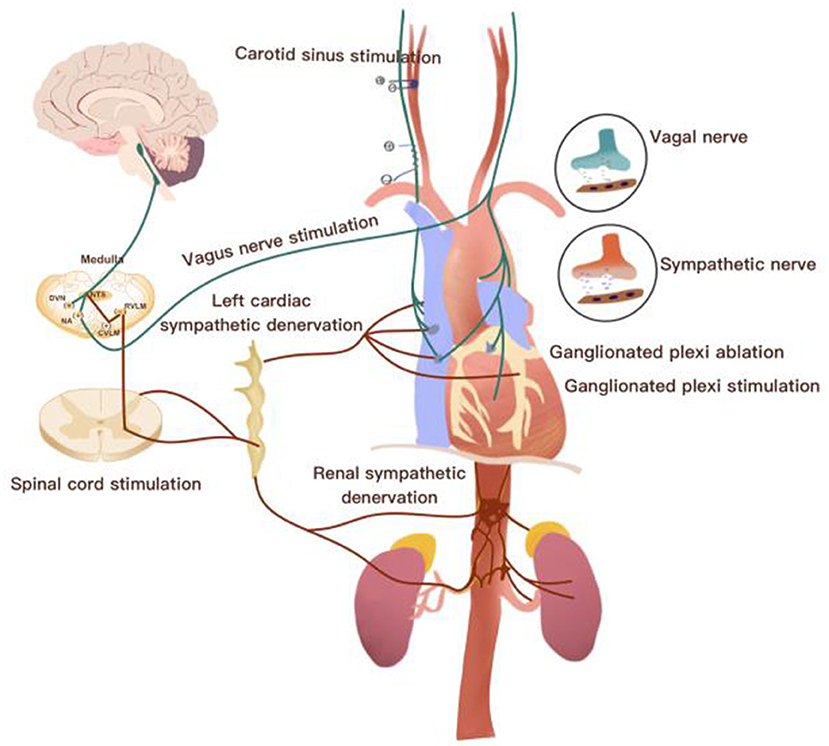


[2].png)
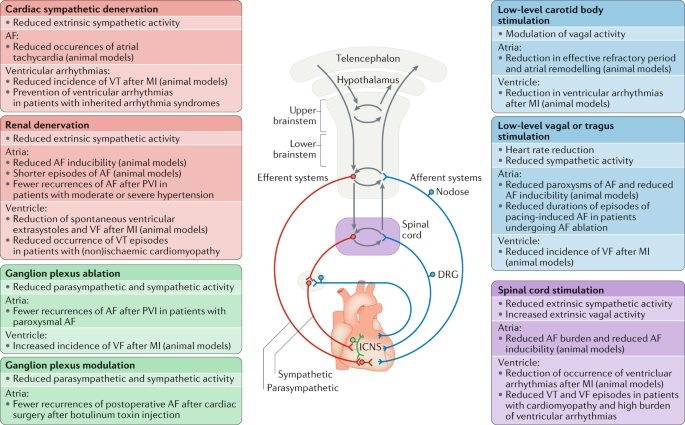


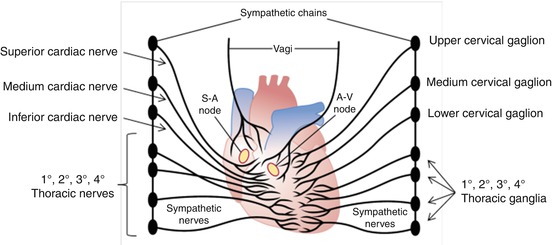



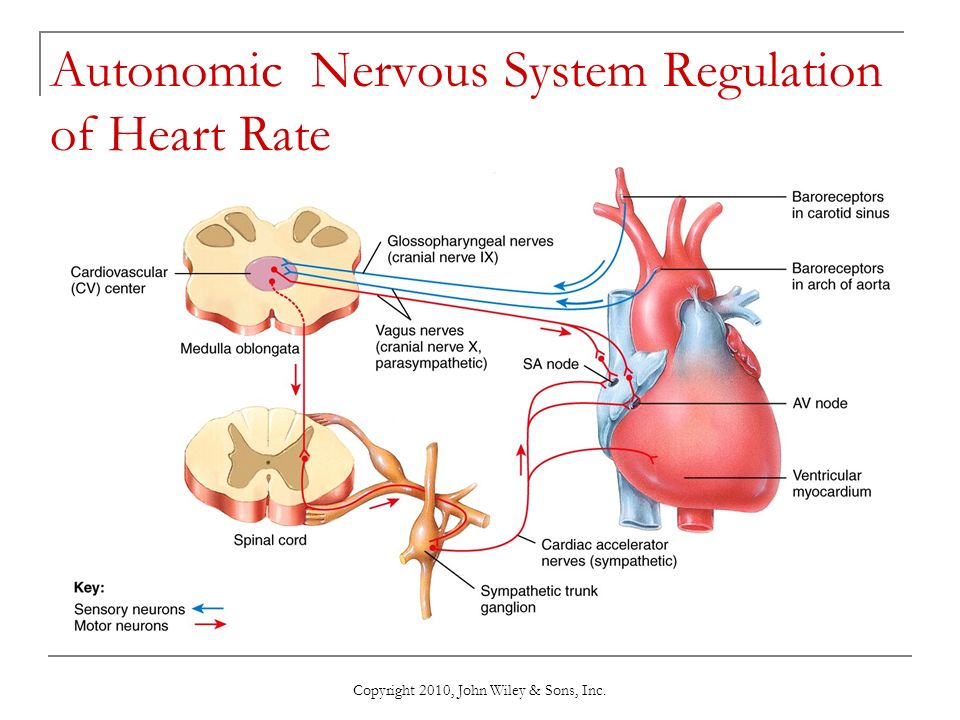



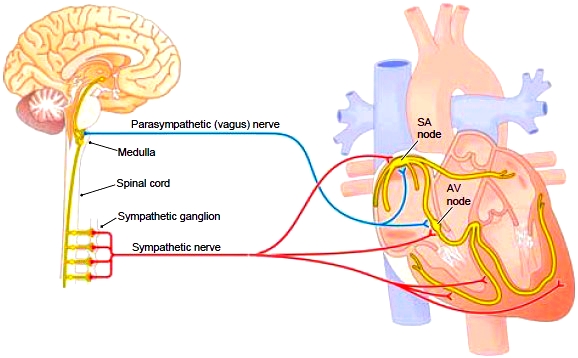
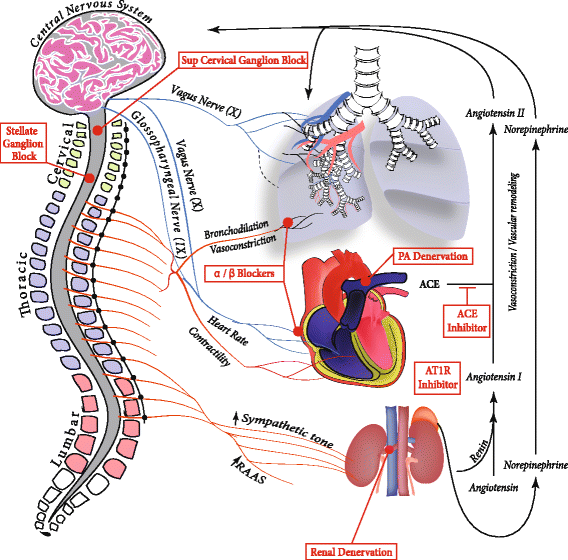




Posting Komentar untuk "Autonomic Nervous System And Heart"